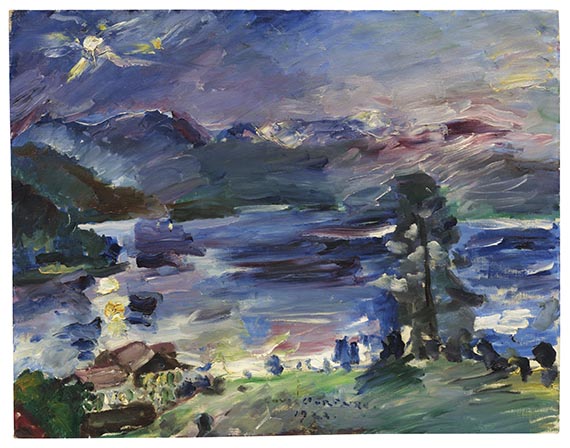Dictionary


European Impressionism
By the 1880s, Impressionism had spread not only to German-speaking nations, but also to other European countries.
The Impressionist tradition was particularly strong in Holland, where Johan Barthold Jongkind became a forerunner and exponent of French Impressionism. Another key Dutch Impressionist was the painter George Hendrik Breitner, who was in contact with the Haager School. In neighbouring Belgium, the highly artificial style of Neo-Impressionism was more popular.
Scandinavian painters also made independent and important contributions to Impressionism. Works by artists such as Fritz Thaulow (Norway), Vilhelm Hammershøi (Denmark) and Anders Zorn (Sweden), display some Impressionist tendencies, and these can also be seen in Edvard Munch’s early work. In Italy, the Realist Macchiaioli group executed works in an early Impressionist style. Other artists working in a more pure Impressionist style included Giuseppe de Nittis und Federico Zandomeneghi.
Impressionism also spread to Eastern Europe. In Hungary, key representatives of the style included Pál Szinyei Merse, Adolf Fényes and some of the artists in the open-air colony in Nagybánya. In the Czech Republic and Slovakia, artists such as Antonín Slavícek and Dominik Skutecký developed an Impressionist painting style. The Romanian Ion Andreescu was one of the main representatives of East European Impressionism.
In Russia, Impressionism inspired the second generation of Realism, which established itself successfully there. Impressionist influences characterised the late work of Ilya Repin. Valentin Serov executed Impressionist portraits and Isaac Lavitan worked as an Impressionist landscape painter.
By the 1880s, Impressionism had spread not only to German-speaking nations, but also to other European countries.
The Impressionist tradition was particularly strong in Holland, where Johan Barthold Jongkind became a forerunner and exponent of French Impressionism. Another key Dutch Impressionist was the painter George Hendrik Breitner, who was in contact with the Haager School. In neighbouring Belgium, the highly artificial style of Neo-Impressionism was more popular.
Scandinavian painters also made independent and important contributions to Impressionism. Works by artists such as Fritz Thaulow (Norway), Vilhelm Hammershøi (Denmark) and Anders Zorn (Sweden), display some Impressionist tendencies, and these can also be seen in Edvard Munch’s early work. In Italy, the Realist Macchiaioli group executed works in an early Impressionist style. Other artists working in a more pure Impressionist style included Giuseppe de Nittis und Federico Zandomeneghi.
Impressionism also spread to Eastern Europe. In Hungary, key representatives of the style included Pál Szinyei Merse, Adolf Fényes and some of the artists in the open-air colony in Nagybánya. In the Czech Republic and Slovakia, artists such as Antonín Slavícek and Dominik Skutecký developed an Impressionist painting style. The Romanian Ion Andreescu was one of the main representatives of East European Impressionism.
In Russia, Impressionism inspired the second generation of Realism, which established itself successfully there. Impressionist influences characterised the late work of Ilya Repin. Valentin Serov executed Impressionist portraits and Isaac Lavitan worked as an Impressionist landscape painter.
Offers
Headquarters
Joseph-Wild-Str. 18
81829 Munich
Phone: +49 89 55 244-0
Fax: +49 89 55 244-177
info@kettererkunst.de
Louisa von Saucken / Undine Schleifer
Holstenwall 5
20355 Hamburg
Phone: +49 40 37 49 61-0
Fax: +49 40 37 49 61-66
infohamburg@kettererkunst.de
Dr. Simone Wiechers / Nane Schlage
Fasanenstr. 70
10719 Berlin
Phone: +49 30 88 67 53-63
Fax: +49 30 88 67 56-43
infoberlin@kettererkunst.de
Cordula Lichtenberg
Gertrudenstraße 24-28
50667 Cologne
Phone: +49 221 510 908-15
infokoeln@kettererkunst.de
Hessen
Rhineland-Palatinate
Miriam Heß
Phone: +49 62 21 58 80-038
Fax: +49 62 21 58 80-595
infoheidelberg@kettererkunst.de
We will inform you in time.




